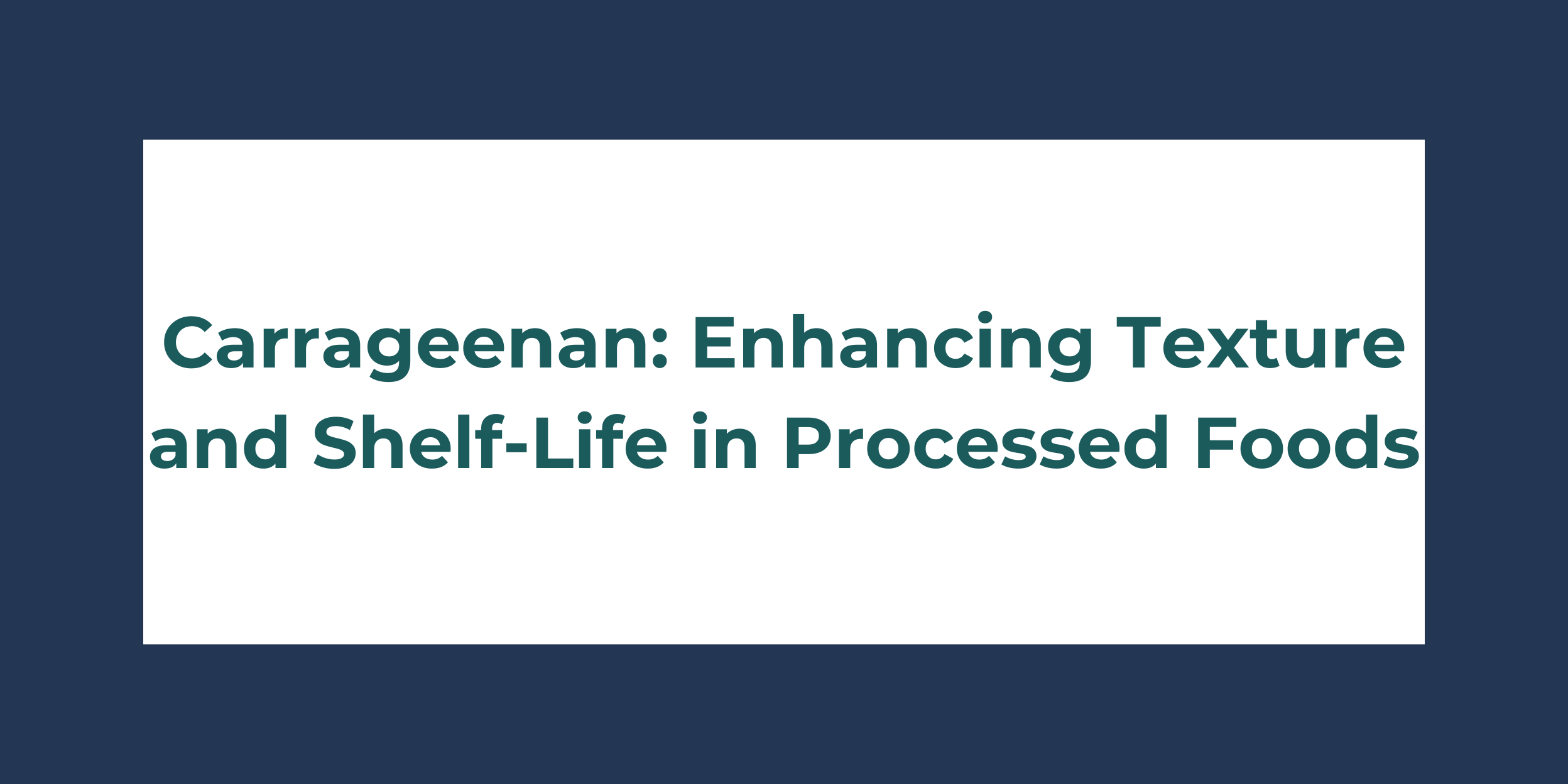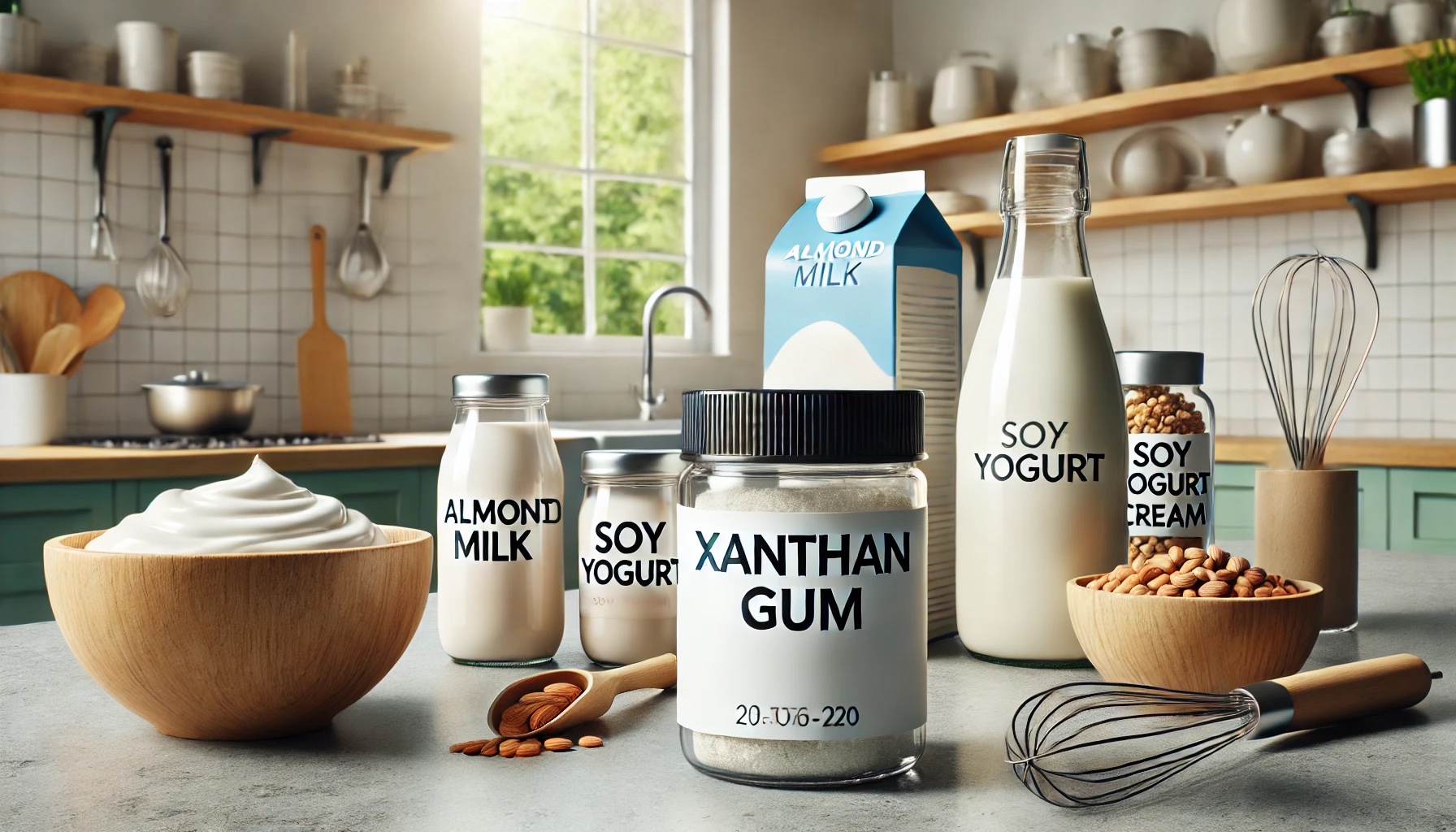In the competitive landscape of the food industry, manufacturers are constantly seeking innovative ingredients that can enhance product quality, improve shelf-life, and meet consumer demands for clean labels.
Carrageenan, a natural hydrocolloid derived from red seaweed, has emerged as a versatile ingredient that addresses these needs effectively.
This blog delves into the multifaceted benefits of carrageenan, its applications in processed foods, and its potential to add value to your products.
What is Carrageenan?
Carrageenan is a family of linear sulfated polysaccharides extracted from red edible seaweeds.
It has been used for centuries in food preparation due to its gelling, thickening, and stabilizing properties.
There are three main types of carrageenan—kappa, iota, and lambda—each with distinct functional properties, making them suitable for various applications in the food industry.
Enhancing Texture
One of the primary advantages of this ingredient is its ability to improve the texture of food products.
Texture plays a crucial role in consumer perception and acceptance of food, and this ingredient excels in providing desirable textural attributes:
- Gelling Agent:
- Kappa carrageenan forms strong, brittle gels with potassium ions, making it ideal for products like gelled desserts, dairy, and meat products.
- Its ability to create a firm gel structure is essential for products requiring a specific form and consistency.
- Kappa carrageenan forms strong, brittle gels with potassium ions, making it ideal for products like gelled desserts, dairy, and meat products.
- Thickening Agent:
- Iota carrageenan, in the presence of calcium ions, forms soft, elastic gels.
- It is particularly useful in dairy products like yogurt and plant-based milk, providing a smooth, creamy texture that mimics the mouthfeel of traditional dairy.
- Iota carrageenan, in the presence of calcium ions, forms soft, elastic gels.
- Stabilizing Agent:
- Lambda carrageenan does not gel but acts as a thickener and stabilizer in milk-based products.
- It prevents separation and improves the overall mouthfeel of products like chocolate milk and cream-based beverages.
- Lambda carrageenan does not gel but acts as a thickener and stabilizer in milk-based products.
Extending Shelf-Life
It’s ability to extend the shelf-life of processed foods is another significant benefit for manufacturers.
Shelf-life extension is crucial for reducing food waste, enhancing profitability, and ensuring product quality over time.
this ingredient contributes to shelf-life extension in the following ways:
- Moisture Retention:
- It helps retain moisture in food products, preventing them from drying out.
- This is particularly beneficial in baked goods, meats, and dairy products, where maintaining moisture content is essential for freshness and texture.
- Emulsion Stability:
- In products like salad dressings, sauces, and non-dairy beverages, it acts as an emulsifier, preventing the separation of oil and water phases.
- This stability ensures that the product remains homogeneous and visually appealing throughout its shelf-life.
- Inhibition of Microbial Growth:
- It has been shown to inhibit the growth of certain bacteria, which can be beneficial in preserving the quality and safety of food products.
- This antimicrobial property helps reduce spoilage and extends the product’s usable life.
Clean Label Appeal
Today’s consumers are increasingly health-conscious and prefer products with natural ingredients and clean labels.
Carrageenan fits well into this trend as it is derived from natural sources and is recognized as safe by global food safety authorities, including the FDA, FSSAI and EFSA.
Applications in Processed Foods
Carrageenan’s versatility makes it a valuable ingredient across a wide range of food applications:
- Dairy and Non-Dairy Products:
- In traditional dairy products like cheese, yoghurt, and ice cream, as well as in plant-based alternatives, carrageenan enhances texture and stability.
- It helps replicate the creamy mouthfeel of dairy in non-dairy alternatives, catering to the growing vegan and lactose-intolerant markets.
- Meat and Poultry Products:
- Carrageenan improves the texture and juiciness of processed meat products like sausages, ham, and deli meats.
- It binds water and fat, ensuring a moist, appealing product that retains its shape and texture during cooking and storage.
- Bakery Items:
- In baked goods, carrageenan enhances moisture retention, shelf-life, and texture.
- It is particularly effective in gluten-free baking, where it helps improve the structural integrity and mouthfeel of the final product.
- Beverages:
- From chocolate milk to protein shakes, carrageenan acts as a stabilizer, preventing ingredient separation and ensuring a smooth, consistent texture.
Conclusion
Carrageenan’s multifunctional properties make it an indispensable ingredient in the processed food industry.
Its ability to enhance texture, extend shelf-life, and meet clean label demands positions it as a valuable addition to a wide array of products.
By incorporating carrageenan into your formulations, you can deliver superior quality products that meet consumer expectations and stand out!








